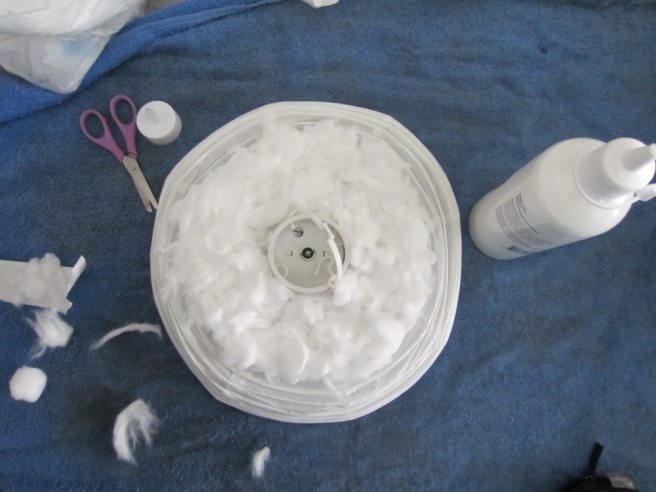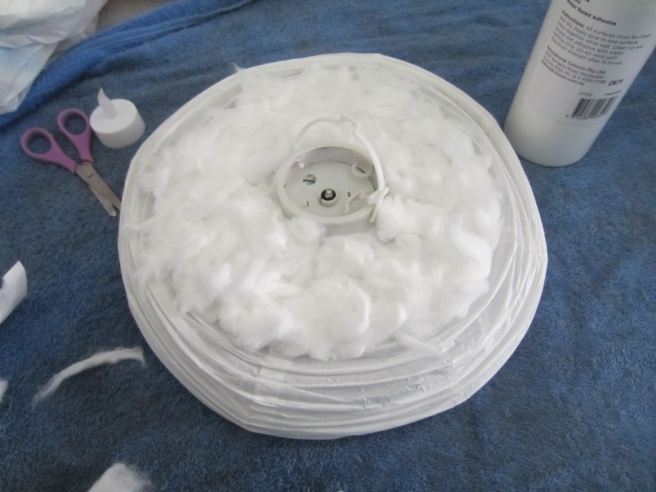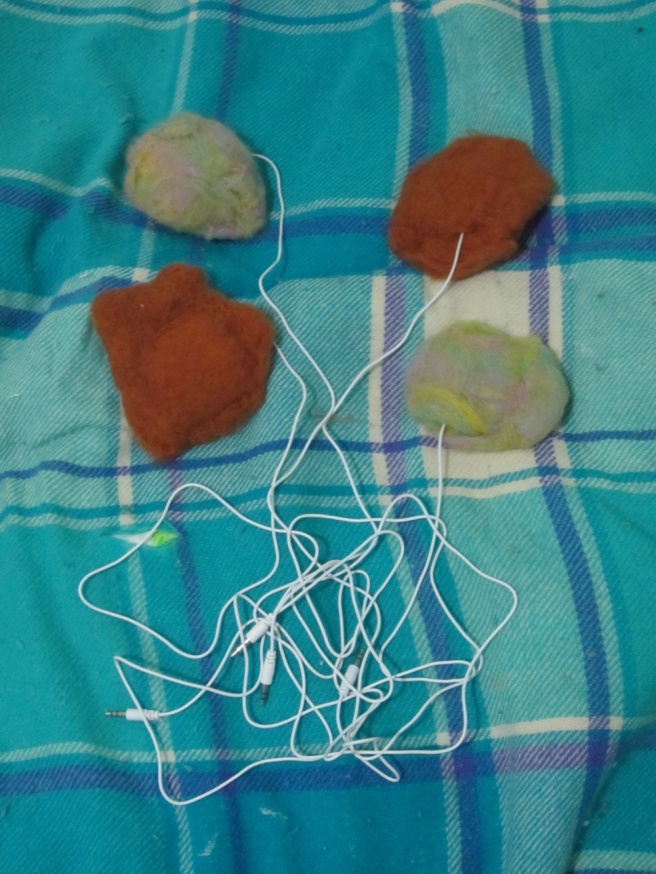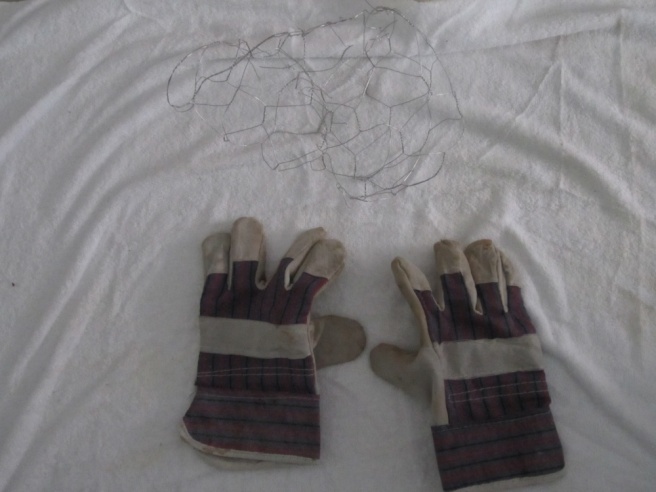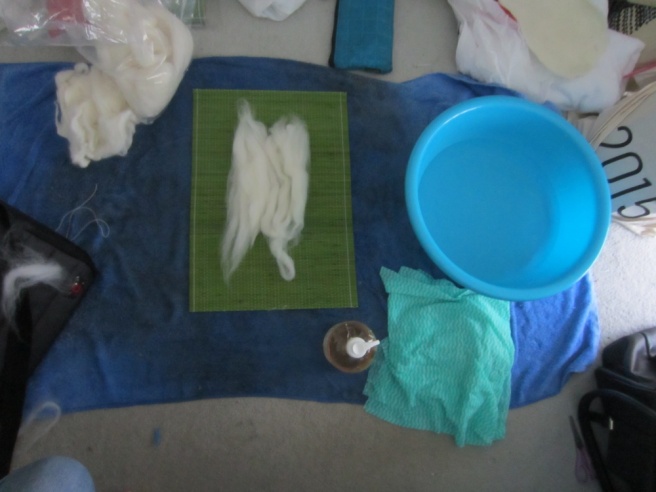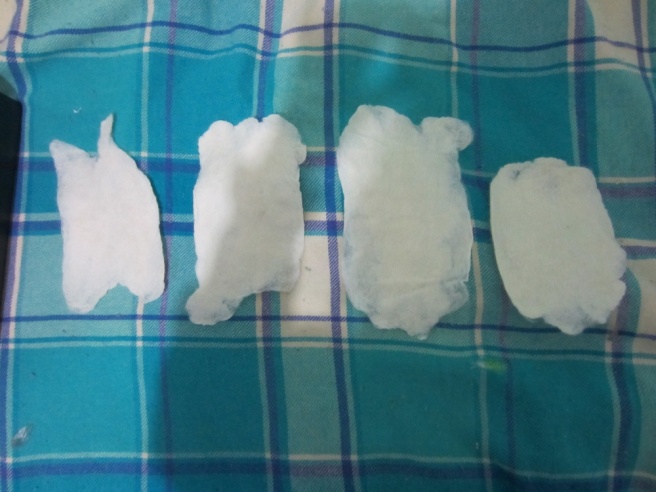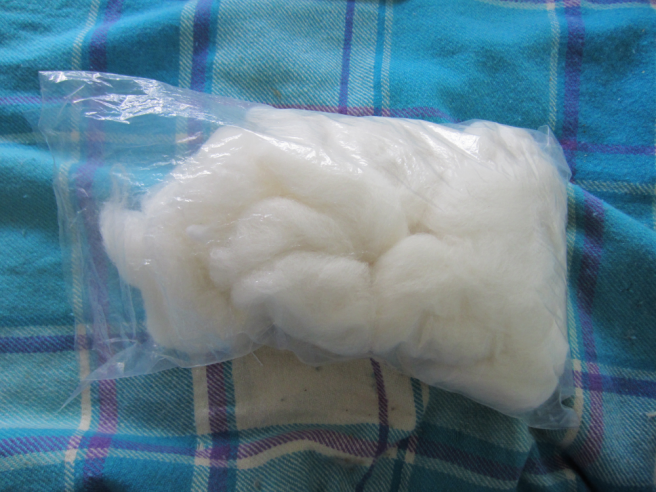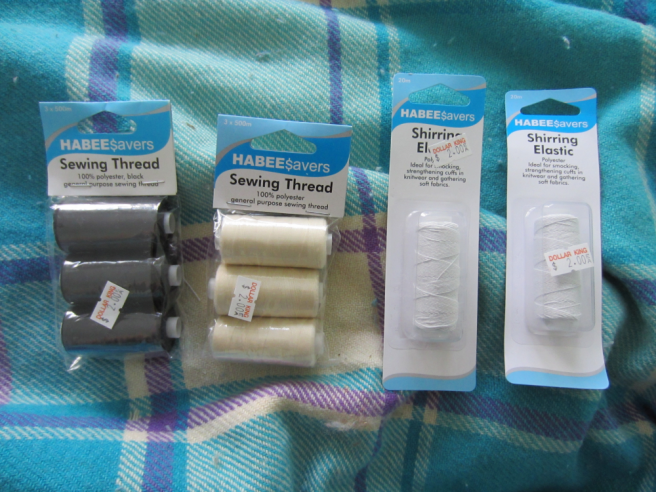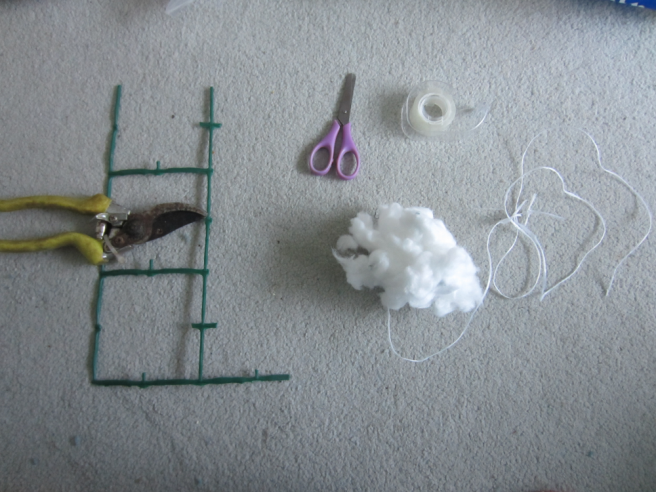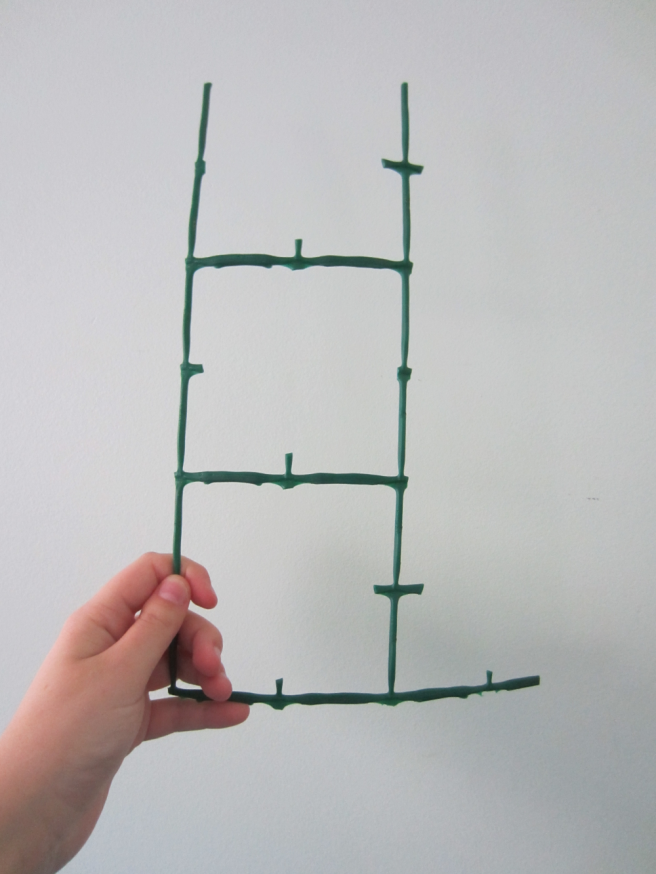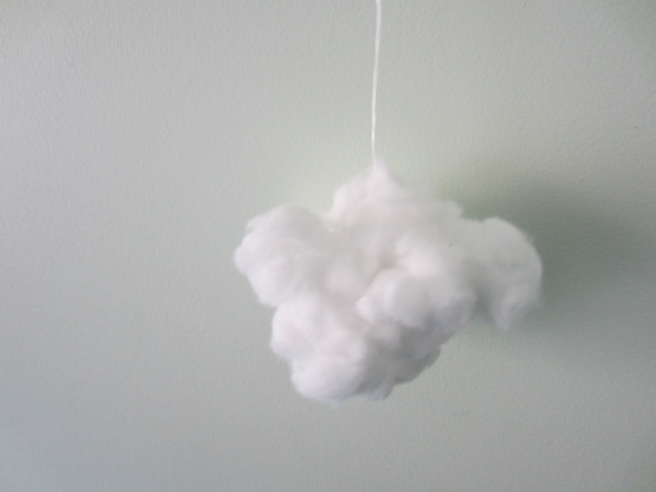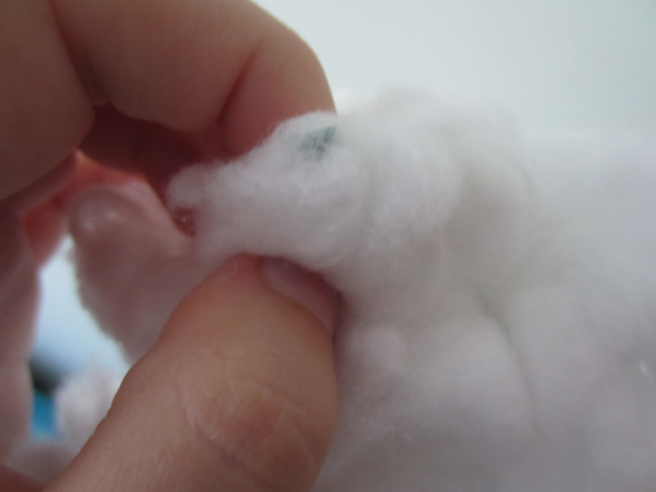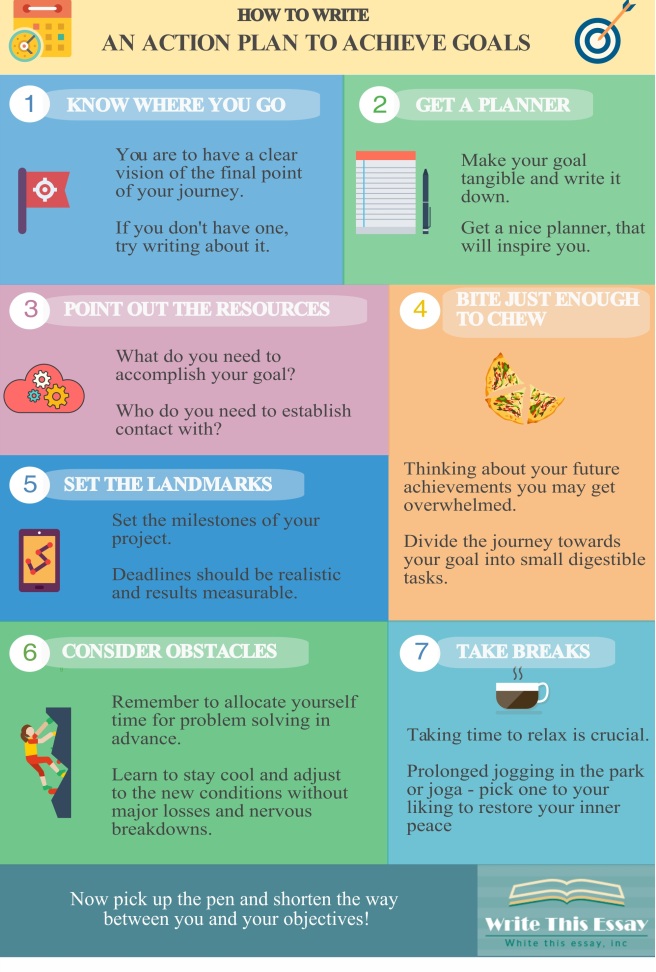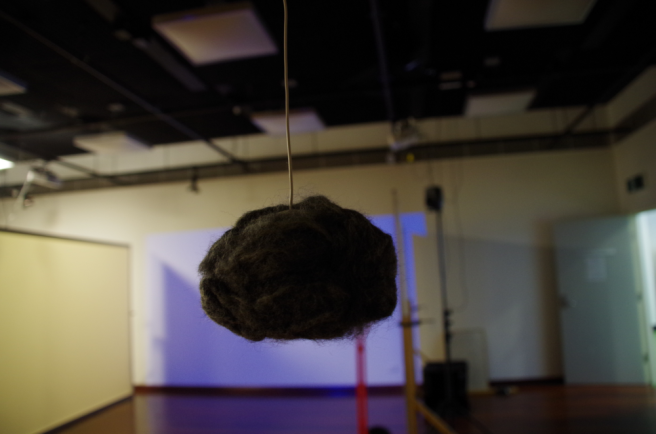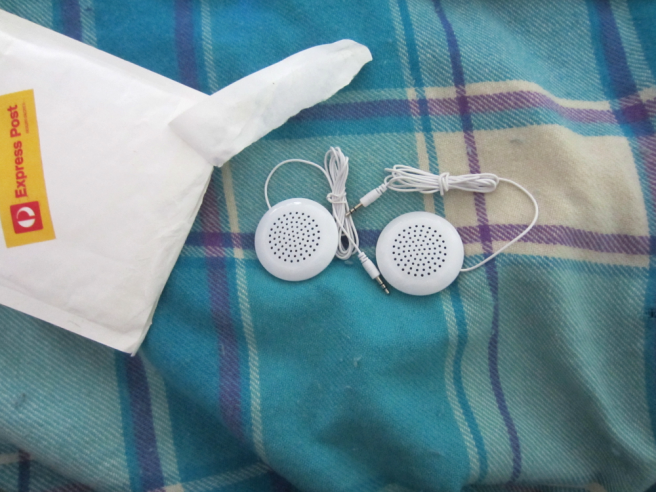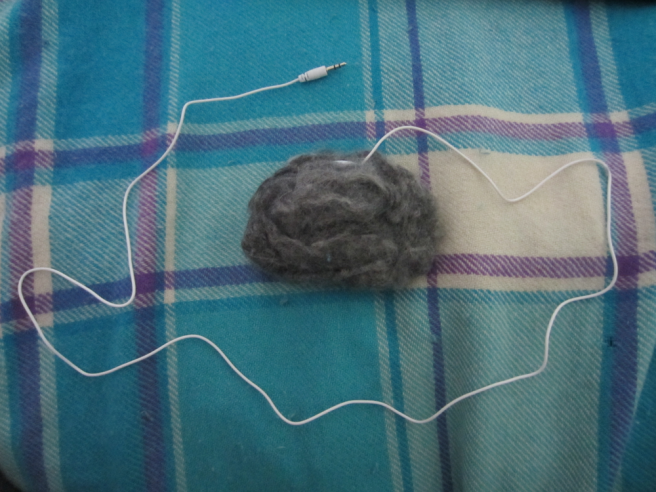Project Statement:
Title: A Million Whispers
Artist: Kate Bennett (4981042)
Materials: Cotton wool, felting wool, shirring elastic, cotton buds, LED lights.
“Human beings are a work in progress that mistakenly think they’re finished.” – Dan Gilbert.
This work explores the ongoing development of unspoken ideas and investigates how these ideas have the potential to change the future. From personal growth to technological advancements, every new route that is built within the future starts with a hidden insight that quietly appears within the mind and develops into a recognizable object that is found within the physical world.
The clouds are set up to signify that the future is still in the process of development, representing the series of thoughts that initiate the creation of this future. Hung up from the ceiling like lightbulbs, these cotton and felted clouds will flicker when hidden ideas begin to develop.
But while human beings have control over how these ideas are conceptualised and brought into the physical world, there is no set prediction that outlines how successful these plans will be within the future. All we can do is take the first step, initiate these plans and hope for the best.
Critical Reflection:
Overall, I have mixed feelings about the project that I had created for MEDA302.
Unlike last semester, there are some material improvements that exist within my work. I successfully understood the process of creating clouds using cotton and felted wool, and the addition of the LED lights inside these clouds gave them a nice aesthetic quality that would look best in dimmed setting. The conceptualisation behind my piece was also somewhat relevant considering that my work had an ‘incomplete’ look to it, even though some of the concepts discussed in previous entries were altered at the last minute.
Yet, to be honest, I’m not entirely confident in the final product of the work. The set-up of my work was mostly improvised, and I should have spent more time planning out the overall structure of my piece throughout the semester whilst I was focusing on material research. There were also some issues with my installed work that made it look like it was incomplete, and I only noticed these problems when I didn’t have enough time to fix them. I saw that the positioning of my clouds was too low in some areas, the shapes of my felted clouds were oddly rigid, and the cool lighting within the larger cloud creates an unnecessary contrast between the warmer colours of the piece.
Although, when presenting my work to Mat and Jo, I was oddly surprised to hear that my work looked decent in the state it was in. The main feedback that I received was that the contextualization behind my work was not being communicated in my final piece, and they said that this issue could be resolved by including more clouds to my piece while adding some hidden speakers around it. Mat also agreed that the contrast between the lights was a bit distracting. But overall, I was quite relieved to hear that my work wasn’t as clumsy as I thought it was, and I will definitely keep these suggestions mind as I continue to work on my final piece for the Grad Show.
